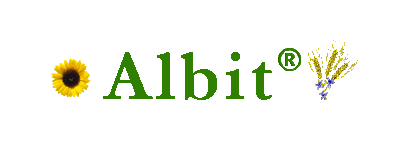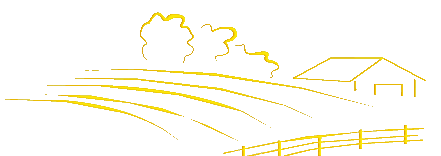Biostimulant Albit has a wide range of activities towards agricultural crops
(antidotal, anti-stress, immunizing, remediant etc.). Data on this webpage
are generalization of field trial results available at Albit LLC, and are given
solely for information purpose. In each respective country, please follow
the application recommendations issued by your national authorities.
Measuring risks are applied on standard flasks of Albit with capacity of 1
liter. One measuring risk corresponds to 40 mL of Albit. This volume is the
most common dosage. 1 lid of a liter flask contains 20 mL of Albit; 1 teaspoon
contains ~4 mL of Albit; 1 tablespoon contains 10 mL of Albit, 1 standard glass
– 200 mL of Albit.
| Crops |
Purpose |
Application rate |
Treatment method, processing time,
application rate of working solution |
Nr. of treatmts. |
Additional information |
Wheat, winter and spring
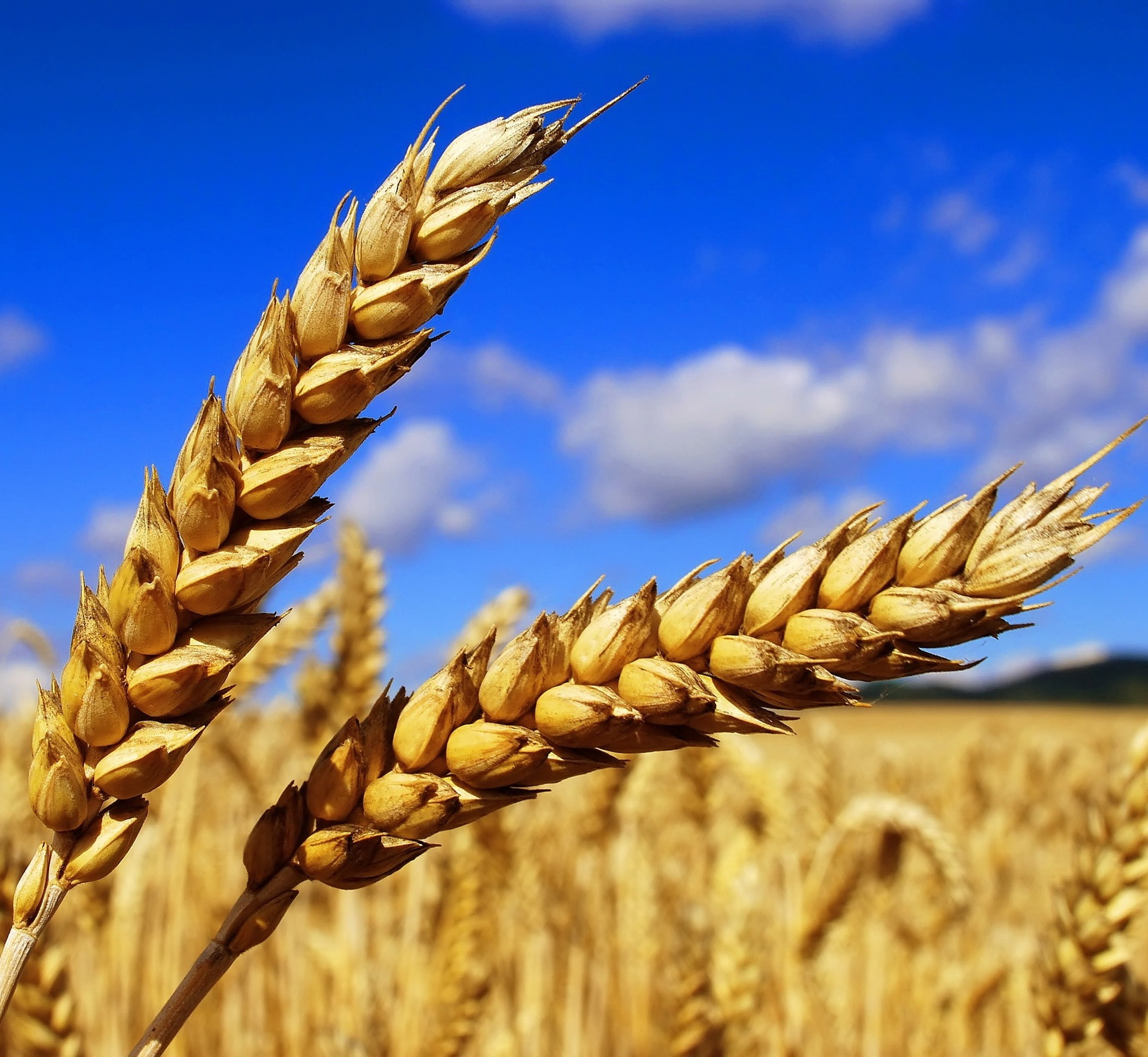 |
Increase of seed germination, activation of growth and development,
increase of resistance to drought and other unfavorable environmental factors,
increase of crop yield, improvement of crop quality (gluten content), protection
against root rots, Septoria leaf spot, brown rust, mildew, increase of
resistance to other plant diseases |
40–100 mL/t |
Presowing seed treatment. Application rate 10 L/t |
1 |
Application of Albit in composition with seed protectants (full or
reduced dose). 100 mL/t should be used for control of phytotoxic effect
of protectants and prolonged immunization of plants in all vegetation
season |
| 30–40 mL/ha |
Foliar spraying at the stages of tillering-stem elongation (BBCH 20–40),
second spraying – at inflorescence emergence, heading (BBCH 50–70) stages.
Application rate: ground sprayers – 200–300 L/ha, aviation sprayers – 50–100
L/ha |
1-2 |
It is more efficient to apply Albit in tank mix with herbicides,
as well as other pesticides, and liquid fertilizers. The second foliar
spraying may be also conducted at the booting stage – stage of flag
leaf (in this case, decrease of gluten content may occur despite of yield
increase). 2nd spraying is recommended only in the case of earlier treatment.
For spring wheat of northern regions and if vegetating season is wet,
2nd spraying should be abolished. For winter wheat, both sprayings should
better be conducted in spring. A higher dose (40 mL/ha) is applied for
plant immunization |
Barley, winter and spring
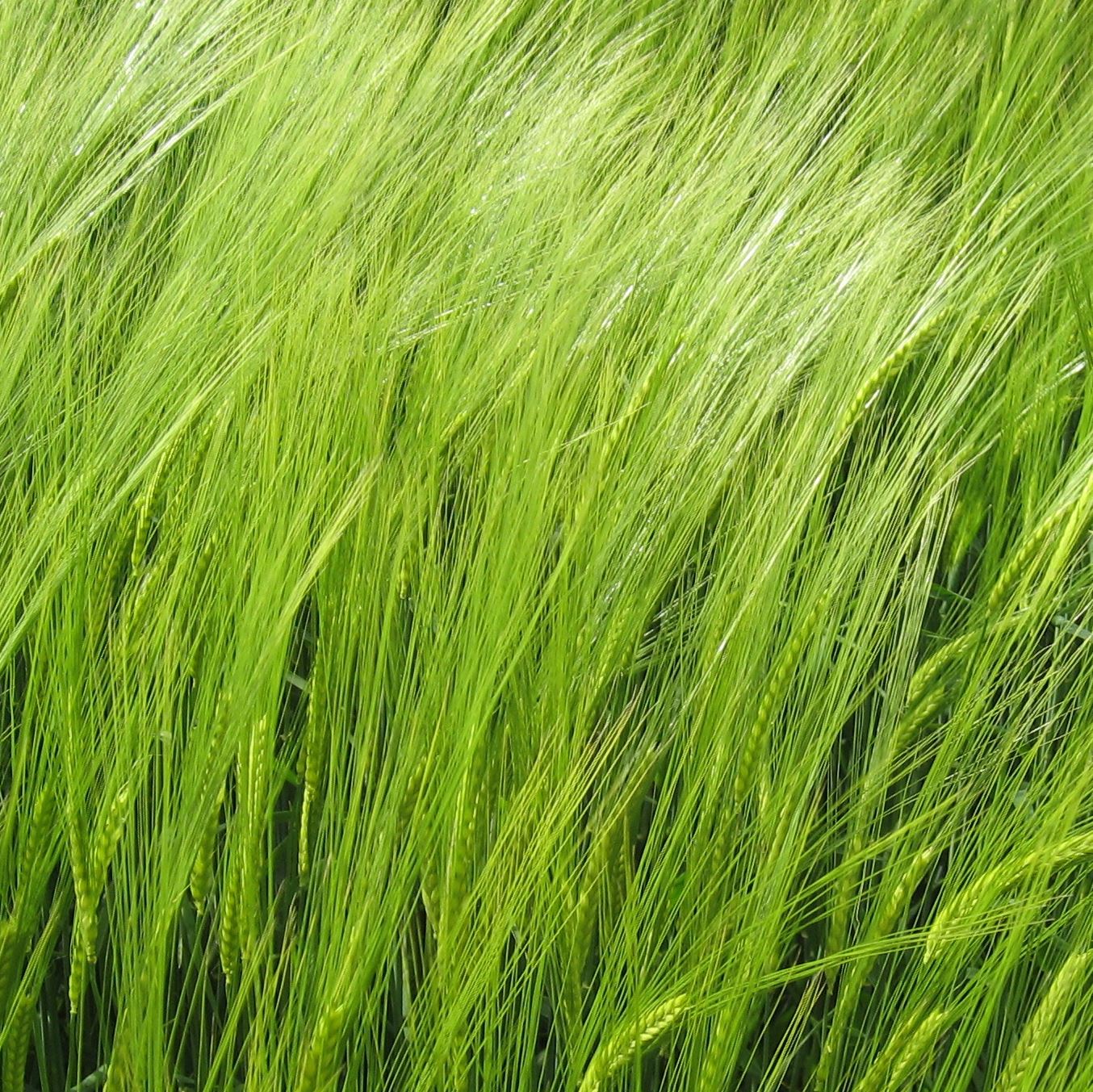 |
Increase of seed germination, activation of growth and development,
increase of resistance to drought and other unfavorable environmental factors,
disease infestation, reducing of plant stress after herbicide treatment,
increase of crop yield, improvement of crop quality |
30-40 mL/t |
Presowing seed treatment. Application rate – 10 L/t |
1 |
|
| 30–40 mL/ha |
Foliar spraying at the stages of tillering–stem elongation (BBCH 20–40),
second spraying – at the such stages: since flag leaf to earing–flowering
(BBCH 40–70). Application rate: ground sprayers – 200–300 L/ha, aviation
sprayers – 50–100 L/ha |
1-2 |
A higher dose (40 mL/ha) is applied for plant immunization.
The 2nd foliar spraying is conducted at the stage of flag leaf for maximal
antidote effect (yield increase), at the stage of earing–flowering
– for maximal efficacy against diseases.
For brewing
barley 1-st foliar spraying is applied |
Triticale, winter and spring
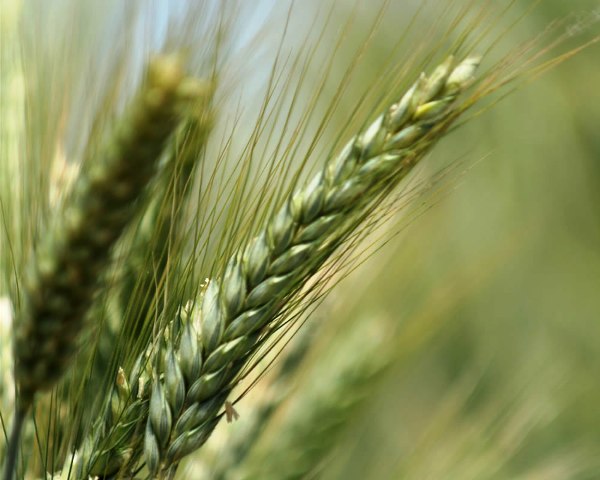 |
Increase of seed germination, activation of growth and development,
increase of resistance to unfavorable environmental factors and to disease
infestation, increase of crop yield, improvement of crop quality |
50 mL/t |
Presowing seed treatment. Application rate – 10 L/t |
1 |
Albit can be used as an antidote to target the phytotoxic
effect of pesticides and other stresses (rate of 100 mL/t) |
| 30–50 mL/ha |
Foliar spraying at the stage of tillering (BBCH 20–30). Application
rate – 200 L/ha |
1 |
A higher dose (50 mL/ha) is applied for plant immunization |
Rye, winter and
spring
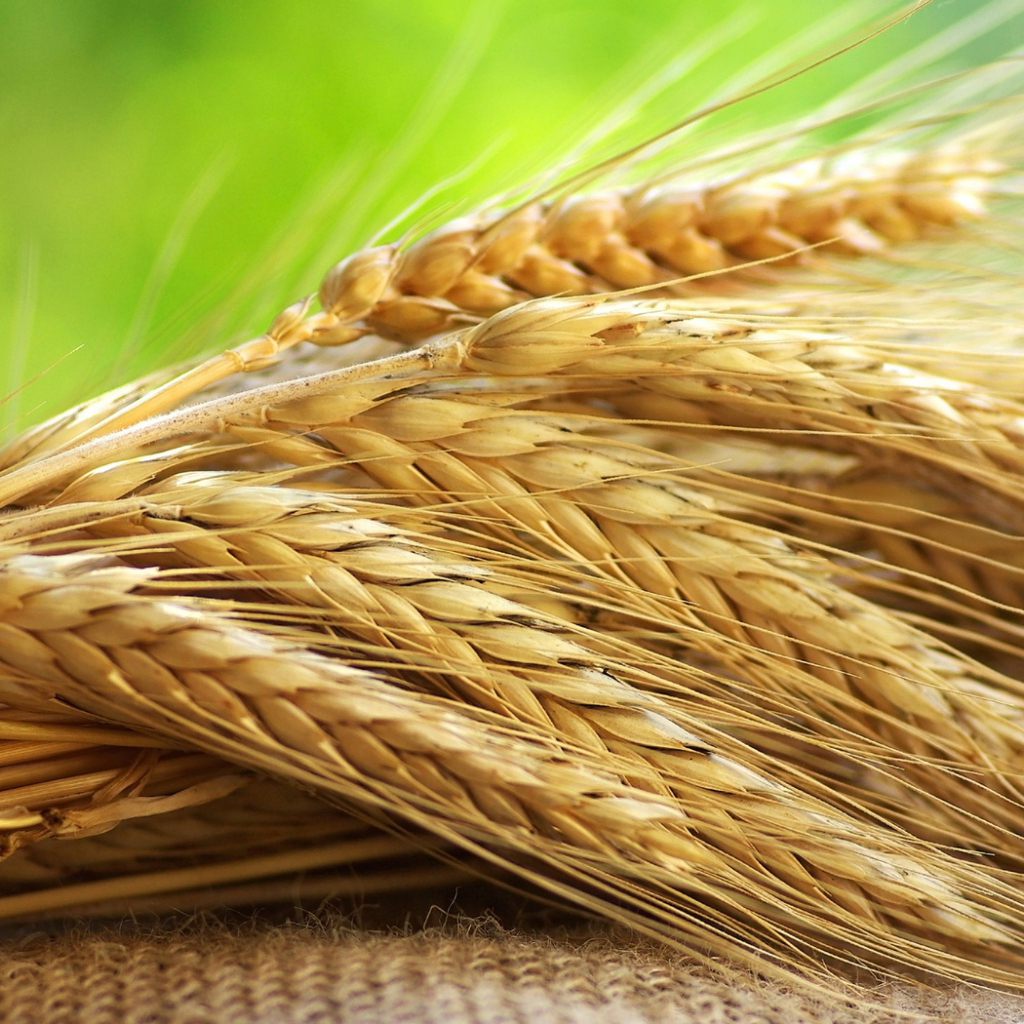 |
Increase of seed germination, activation of growth and development,
increase of resistance to unfavorable environmental factors and to disease
infestation, increase of crop yield, improvement of crop quality |
50 mL/t |
Presowing seed treatment. Application rate – 10 L/t |
1 |
|
| 20 mL/ha |
Foliar spraying at the stage of tillering (BBCH 20–30). Application
rate – 200 L/ha |
1 |
It is best to conduct foliar spraying of winter rye in spring |
Oats
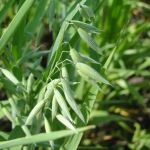 |
Increase of seed germination, activation of growth and
development, increase of resistance to unfavorable environmental factors,
to disease infestation, increase of yield, improvement of crop quality,
reducing of mycotoxin content |
20 mL/t |
Presowing seed treatment, application rate – 10 L/t |
1 |
After Albit treatment the reducing of disease
(brown rust, red-brown blotch, Septoria leaf spot,
root rots) and insect pests (flea beetles, wheat leaf-miner, corn-flies)
was shown |
| 20 mL/ha |
Spraying of plants in the tillering stage (BBCH 20–30). Application
rate –200–300 L/ha |
1 |
Rice
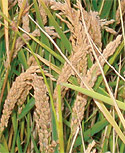 |
Increase of seed germination, tillering
coefficient, length of roots, number of seeds in one panicle, weight
of seed from main panicle, activation of growth and development, increase
of resistance to unfavorable environmental factors, to disease infestation,
increase of yield, improvement of crop quality |
50-100 mL/t |
Presowing seed treatment, application rate – 15 L/t |
1 |
Against phytotoxic effect of herbicides,
application rate of Albit may be increased up to 200 mL/t. Additional
foliar spraying with Albit (as antidote, 40 mL/ha) may be conducted in
tank mixture with herbicide |
Millet
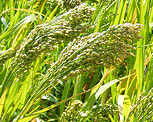 |
Increase of seed germination,
activation of growth and development, increase of resistance to unfavorable
environmental factors and to disease infestation, increase of yield,
improvement of crop quality |
50 mL/t |
Presowing seed treatment, application rate of working solution
– 20 L/t |
1 |
|
| 30 mL/ha |
Spraying at the stages of tillering (BBCH 20-30), application
rate of working solution – 200-300 L/ |
1 |
|
Maize
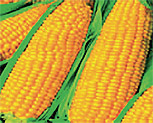 |
Increase of seed germination,
activation of growth and development, increase of resistance to unfavorable
environmental factors and to disease infestation, increase of yield of
grain and green biomass, improvement of crop quality |
100 mL/t |
Presowing seed treatment, application rate of working
solution – 10 L/t |
1 |
Application of Albit in-furrow during the planting
(200 mL/hà) may replace seed treatment |
| 40 mL/ha |
Foliar spraying: first at the stages of 3-6 leaves (BBCH
13-16) and second at the flowering stage (BBCH 50-65), application rate
of working solution – 300 L/ha |
1-2 |
Seed treatment and the first foliar spraying
are the most effective (at the stages of 3-6 leaves). These treatments
can be combined with application of herbicides. The second treatment
is recommended as a supplement to the first one. |
Sorghum
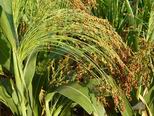 |
Increase of seed germination,
activation of growth and development, increase of resistance to unfavorable
environmental factors and to disease infestation, increase of yield,
improvement of crop quality |
80 mL/t |
Presowing seed treatment, application rate of working solution
– 20 L/t |
1 |
Application rate of Albit may be increased up
to 120 mL/t, 120 mL/ha for increase of anti-stress and antidote properties
of the product |
| 80 mL/ha |
Spraying at the stages of 3-5 leaves (BBCH 13-15), application
rate of working solution – 200–300 L/ha |
1 |
Buckwheat
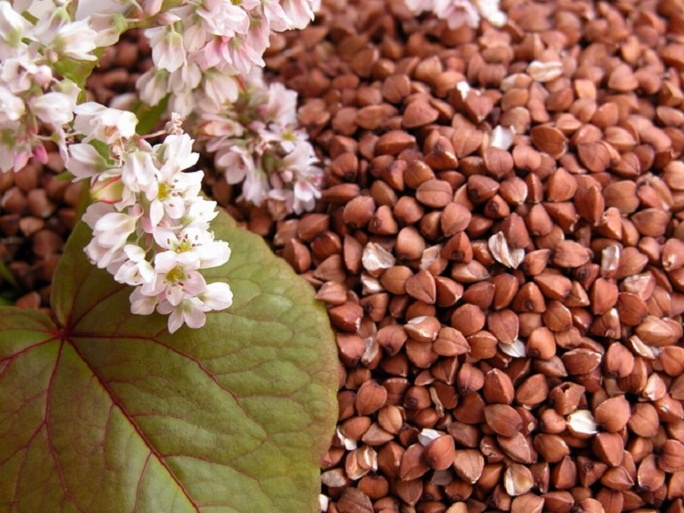 |
Increase of seed germination, activation of
growth and development (more uniform development), increase of resistance
to unfavorable environmental factors and to disease infestation, increase
of yield, improvement of crop quality |
50 mL/t |
Presowing seed treatment, application rate of working
solution – 15 L/t |
1 |
Additional application of Albit as antidote
is recommended for maximal anti-stress effect (foliar spraying at the
first half of vegetation season, 40 mL/ha) |
Sugar beet
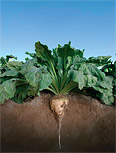 |
Increase of seed germination, activation of
growth and development, increase of resistance to unfavorable environmental
factors, decrease of stress after herbicide treatment, increase of yield,
sugar content, control of rout sprout, increase of resistance to other
diseases |
100 mL/t |
Presowing seed treatment, application rate of working
solution – 15 L/t
|
1 |
May be used in seed coating (in combination with other pesticides) |
| 30–40 mL/ha |
Spraying at the stages of 5-6 leaves (BBCH 15) before closing
leaves in a row phase (BBCH 35) with interval 10-20 days. Application
rate of working solution – 300 L/ha |
1-2 |
Use of Albit is effective for foliar spraying in tank mix pesticides.
A higher dose (40 mL/ha) is applied for plant immunization |
Sunflower
 |
Increase of seed germination, activation
of growth and development, increase of resistance to unfavorable environmental
factors and to disease infestation, increase of yield, improvement of
crop quality |
200 mL/t |
Presowing seed treatment, application rate of working solution
– 50 L/t |
1 |
Application rate of Albit may be increased
up to 500 mL/t for increase of antidote properties of the product. Seeds
should be treated with the working solution of Albit with hand-held syringe.
Leave the treated seeds on the ground in a shaded place, in a layer less
then 20 cm, and keep them 2-3 days before sowing |
| 40 mL/ha |
Foliar spraying: first at the stages of 4-7 leaves (BBCH
14-17) and second at the stage of beginning of blossoming (BBCH 50-65),
application rate of working solution – 300 L/ha |
1-2 |
In most cases, only one foliar spraying
will be enough instead of 2 recommended ones (the first spraying is preferable) |
Potato
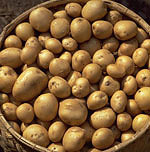 |
Increase of seed germination,
activation of growth and development, increase of resistance to unfavorable
environmental factors, increase of yield, improvement of crop quality
and fraction of commercial yield, protection against diseases (brown
patch, late blight, Alternaria leaf spot) |
100 mL/t (or 10 mL/L of working solution) |
Treatment of tubers before planting. Application rate –
10 L/t |
1 |
Application of Albit in
tank mixture with insecticides and herbicides is effective. In conditions
of active disease development, the number of sprayings with Albit may be
increased up to 4 for plant immunization (with interval 10-15 days). In
this case, alternation of sprayings with Albit and treatment with fungicides
of direct effect is recommended. 2nd and following sprayings are recommended
only in the case of earlier treatment
|
| 50 mL/ha (1-2 mL/10 L of working solution) |
Foliar spraying: first – at the stage of
budding – closing of leaves in a row (BBCH 30-60), second – after 10-15
days of the first foliar spraying. Application rate – 300-400 L/hà |
2 |
Fiber flax and
oilseed flax
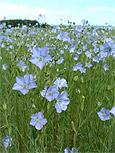 |
Increase of seed germination, acceleration of
plant development, increase of resistance to unfavorable environmental
factors, reducing of plant stress after herbicide treatment, increase of
yield, improvement of crop quality (percentage-number of flax fiber), protection
against diseases (anthracnose, mottle, bacterial disease, pasmo disease) |
50-100 mL/t |
Presowing seed treatment. Application rate – 5-15 L/t |
1 |
Higher dose (70-100 mL/t)
is used against diseases. For increase of efficacy of pesticides, addition
of adjuvant (NaCMC, 0.2 kg/t) in working solution is recommended |
| 50-100 mL/hà |
Foliar spraying at the stage of "fir-tree" (BBCH
20-30). Application rate – 200-300 L/hà |
1 |
50 mL/hà is an optimal dose for fiber
flax, 100 mL/hà – for oilseed flax. For herbicidal stress neutralization
Albit may be applied both in tank mix with herbicides and after their application
(during 5 days). After Albit treatment, decrease of harmfulness of flax
flea beetles is observed |
Soybeans
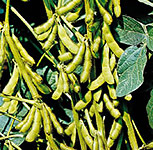 |
Increase of seed germination, rise the amount of nitrogen-fixing
nodules, activation of growth and development, increase of resistance
to unfavorable environmental factors, disease infestation, decrease
stress after herbicide treatments, increase of crop yield, improvement
of crop quality |
50 mL/t |
Presowing seed treatment.
Application rate – 15 L/t |
1 |
Application of Albit together with inoculates of
nodule bacteria requires increased dose of Albit (60-80 mL/t) |
| 40-50 mL/hà |
Foliar spraying at the stage of 2-3 true leaves (ÂÂÑÍ 12-13) or at the
budding stage (ÂBCH 50-60). Application rate – 300 L/hà |
1 |
A higher dose (50 mL/ha) is applied for plant
immunization. Albit may be applied as antidote in tank mix with herbicides
according to the recommendations |
Pea
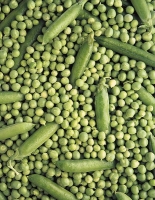 |
Increase of seed germination, activation of growth and development,
increase of resistance to unfavorable environmental factors, disease infestation,
increase of crop yield, improvement of crop quality |
50 mL/t |
Presowing seed treatment. Application rate – 15 L/t |
1 |
|
| 30 mL/hà |
Foliar spraying at the budding stage (ÂBCH 50-60). Application rate –
300 L/hà |
1 |
Albit may be applied as antidote in tank mix with
pesticides according to the recommendations |
Chickpea
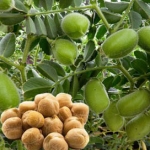 |
Increase of seed germination, activation of growth and development,
increase of resistance to unfavorable environmental factors, disease infestation,
increase of crop yield, improvement of crop quality |
30-50 mL/t |
Presowing seed treatment. Application rate – 10 L/t |
1 |
A higher dose (50 mL/ha) is applied for plant immunization |
| 30 mL/hà |
Foliar spraying at the stage of 4-5 true leaves (ÂBCH 14-15). Application
rate – 200 L/hà |
1 |
Seed treatment or foliar spraying may be applied
for maximal effect (effect of 2-fold treatment is lower than 1-fold one).
Albit may be applied as antidote in tank mix with pesticides according
to the recommendations |
Peanut
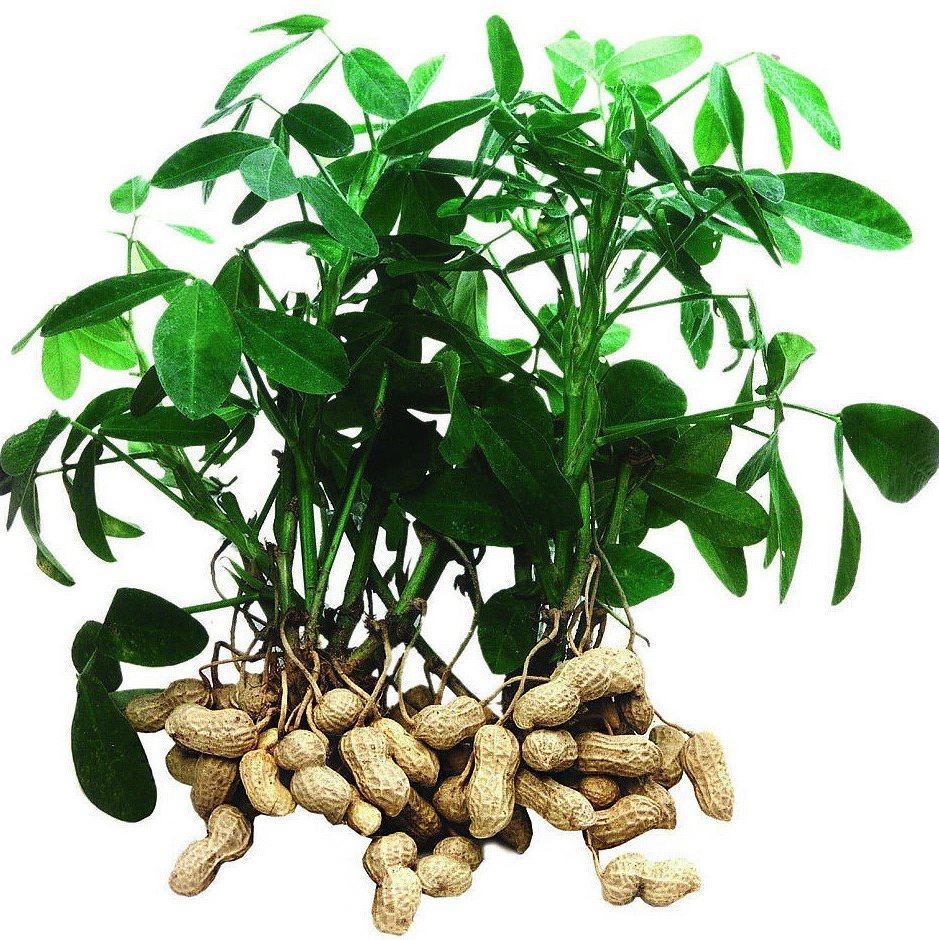 |
Increase of seed germination, activation of growth and development,
increase of resistance to drought, increase of crop yield |
30-50 mL/t |
Presowing seed treatment. Application rate – 10 L/t. |
1 |
Application of Albit in-furrow during the planting
(200 mL/hà) may replace seed treatment |
| 30-50 mL/hà |
Foliar spraying at the stage of 4-5 true leaves (ÂBCH 14-15). Application
rate – 200 L/hà. |
1 |
Albit may be applied as antidote in tank mix with
pesticides according to the recommendations. Seed treatment or foliar
spraying may be applied for maximal effect (effect of 2-fold treatment
is lower than 1-fold one) |
Lentil
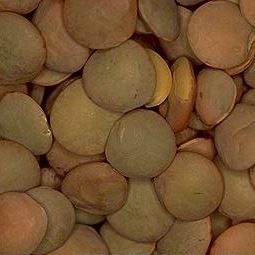 |
Increase of seed germination, activation of growth and development,
increase of resistance to unfavorable environmental factors, disease infestation,
increase of crop yield, improvement of crop quality |
50-150 mL/t |
Presowing seed treatment. Application rate – 10-15 L/t |
1 |
A higher dose (150 mL/ha) is applied in combination
with pesticides and for increase of plant stress resistance |
| 30-100 mL/hà |
Foliar spraying at the budding stage (ÂBCH 50-60). Application rate –
200-300 L/hà |
1 |
Albit may be applied as antidote in tank mix with
pesticides according to the recommendations. Maximal recommended doses
of Albit are applied in combination with pesticides |
French beans
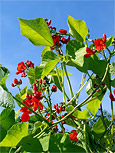 |
Increase of seed germination, activation of growth and development,
increase of resistance to unfavorable environmental factors, disease infestation,
increase of crop yield, improvement of crop quality |
50 mL/t |
Presowing seed treatment. Application rate – 15 L/t. |
1 |
|
| 30 mL/hà |
Foliar spraying at the budding stage (ÂBCH 50-60). Application rate –
300 L/hà. |
1 |
|
Fodder beans
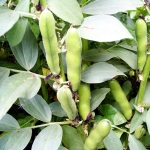 |
Increase of seed germination, activation of growth and development,
increase of resistance to unfavorable environmental factors, disease infestation,
increase of crop yield, improvement of crop quality |
50 mL/t |
Presowing seed treatment. Application rate – 15 L/t. |
1 |
For induction of long-term resistance to herbicide
stress and diseases application rate of Albit may be increased up to 100-150
mL/t. |
| 30 mL/hà |
Foliar spraying at the budding stage. Application rate – 300 L/hà. |
1 |
Albit may be applied as antidote in tank mix with
pesticides according to the recommendations; in this case 2-fold spraying
with Albit is recommended |
Lupine
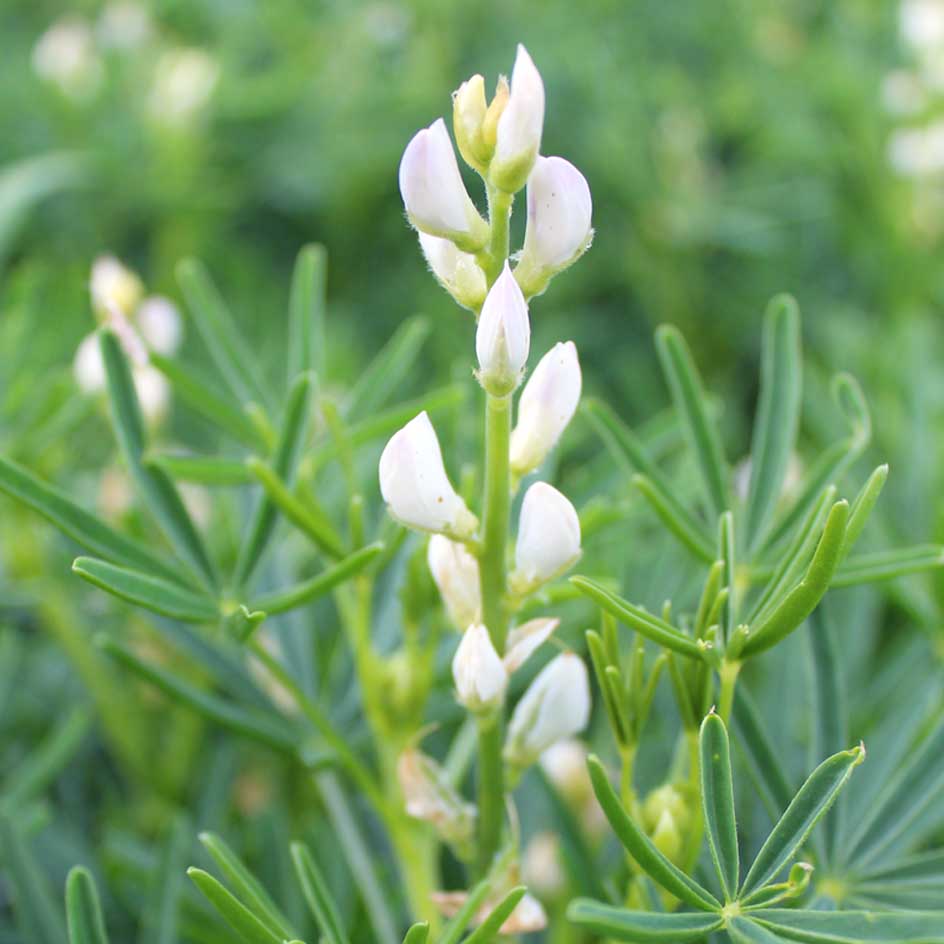 |
Increase of seed germination, activation of growth and development,
increase of resistance to unfavorable environmental factors, disease infestation,
increase of crop yield, improvement of crop quality |
50 mL/t |
Presowing seed treatment. Application rate – 15 L/t |
1 |
To achieve a high yield of lupin, it is recommended to do combined seed treatment with Albit and rhizobacteria |
| 30 mL/hà |
Foliar spraying at the budding stage (ÂBCH 50-60). Application rate –
300 L/hà |
1 |
As an antidote, Albit may be applied both in a tank mix with pesticides, and separately from them (after pesticide application, following the recommendations correspondingly) |
Spring and winter rapeseed (canola)
 |
Increasing of field germination,
acceleration of plant growth and development, improving of plant resistance
to unfavorable conditions of environment, providing the defense against
plant diseases, decreasing of stress after herbicide and insecticide
treatments, increasing of yield, oil content in seed and improving of
yield quality |
50-60 mL/t |
Presowing seed treatment. Application rate – 10 L/t |
1 |
A higher dose (60 mL/t)
is applied for increasing of seed germination |
| 50-60 mL/ha |
Foliar spraying: first – at the rosette stage–stem elongation
(BBCH 20-45), second – at the budding stage–beginning of flowering (BBCH
50-65). Application rate – 200 L/hà |
1-2 |
Foliar spraying may be conducted in
tank mix with pesticide treatments according to their recommendations
(from the first half of plant vegetation to flowering stage inclusively).
The first spraying of winter rape is recommended to conduct in autumn,
the second – in spring. A higher dose (60 mL/ha) is applied for plant
immunization and foliar spraying as antidote after pesticide overdose |
Clover
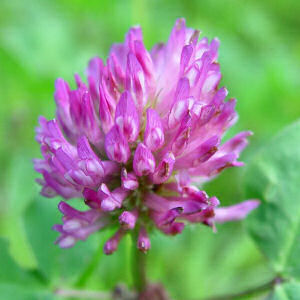 |
Activation of growth and development, accelerated regrowth after mowing,
increasing the number of inflorescences, accelerated passing of phases
of plant development, increasing of plant resistance to unfavorable conditions
of environment, providing the defense against plant diseases, increasing
the green mass yield, improving of product quality |
40 mL/hà |
Foliar spraying: first – at the beginning of vegetation (after overwintering),
second – at the booting stage – beginning of budding stage (BBCH 10-40).
Application rate – 300 L/hà |
2 |
It is more efficient to apply Albit in tank mix with
leaf fertilizers. To enhance regrowth after mowing, Albit may be applied
for spraying during 7 days after mowing |
Galega
(Galega orientalis)
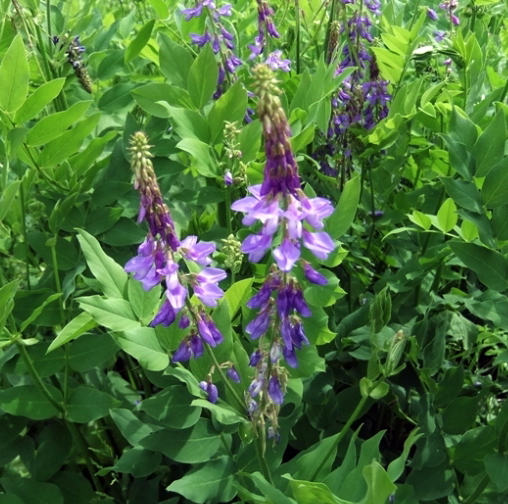 |
Increasing of field germination, activation of growth and
development, accelerated regrowth after mowing, increasing of plant resistance
to unfavorable conditions of environment, providing the defense against
plant diseases, increasing the green mass yield, improving of product quality |
70 mL/t |
Seed treatment. Application rate – 15 L/t |
1 |
|
| 40 mL/hà |
Foliar spraying at the budding stage (BBCH 30-50). Application rate –
300-400 L/hà |
1 |
To enhance regrowth after mowing,
Albit may be applied for spraying during 7 days after mowing |
Alfalfa
and other fodder grasses
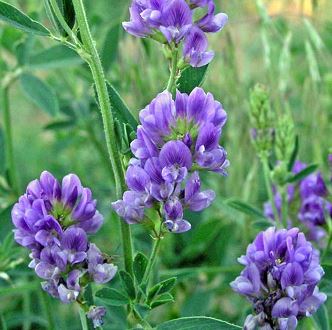 |
Increasing of field germination, accelerated
regrowth after mowing, increasing the number of inflorescences, activation
of growth and development, increasing of plant resistance to unfavorable
conditions of environment, providing the defense against plant diseases,
increasing the green mass yield and seeds, improving of product quality |
50 mL/t |
Seed treatment. Application rate – 15 L/t |
1 |
|
| 40 mL/hà |
Foliar spraying: first – at the beginning of vegetation (after overwintering).
Application rate – 300 L/hà |
1 |
It is more efficient
to apply Albit in tank mix with leaf fertilizers |
| 70 mL/hà |
Foliar spraying: during 7 days after each mowing. Application rate
– 300 L/hà |
2-3 |
Foliar spraying also may be applied
for regrowth of plants after severe pest damage. It is more
efficient to apply Albit in tank mix with insecticides |
Amaranth
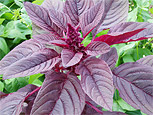 |
Increasing of field germination, acceleration of growth and development,
increasing of plant resistance to unfavorable conditions of environment,
providing the defense against plant diseases, increasing the green mass
yield and seeds |
0.5-4 mL/L of water |
Soaking of seeds before sowing from 30 minutes (with constant stirring)
up to 10 hours (without stirring). Application rate – 1 L/kg. |
1 |
It is more efficient to apply Albit as antidote in
tank mix with chemical protectants. A higher dose is applied for increasing
the plant resistance to the following spraying of plants with pesticides.
Solution of Albit (used for seed treatment) also may be applied into the
soil during planting |
Tomatoes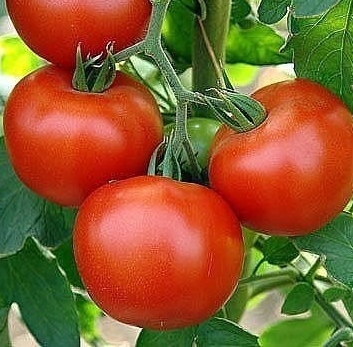 |
Increased germination rate; stimulated growth and development of crops; increased resistance to adverse environmental conditions, pesticide stress, disease damage; increased early yield and overall yield; increased vitamin content and reduced nitrate content in fruits; improved product quality |
2 ml/kg (2 ml/L of water) |
Soak seeds before sowing for 3 hours. Application rate 1 L/kg |
1 |
After planting the seedlings, water the soil with a 1-2 ml/L water concentration of the solution (solution is applied to the soil near the roots, not on plants’ leaves) |
30 ml/ha (1 ml/10 L of water) |
Spraying crops: 1st spray in the 2-3 true leaves stage (BBCH 12-13), 2nd spray 15 days later. Application rate 300 L/ha |
2 |
Two sprays are the minimum treatment option. If intensive use of chemicals is the case (especially in glasshouse conditions), we recommend using Albit as an antidote (safener) every 1-2 weeks alongside the routine pesticide treatments (up to 10 per growing season) at a working solution rate of 1-2 ml/10 L (or 30-65 ml/ha). Albit can also be applied through drip irrigation: 2 ml/10 L of product is added to the irrigation system and supplied until the final rate of 1 L of Albit per ha is reached (three times in the first half of the growing season). Similarly, a solution of 1-2 ml/10 L can be used for regular irrigation instead of water (the solution should wet the plants' leaves) |
Cucumbers
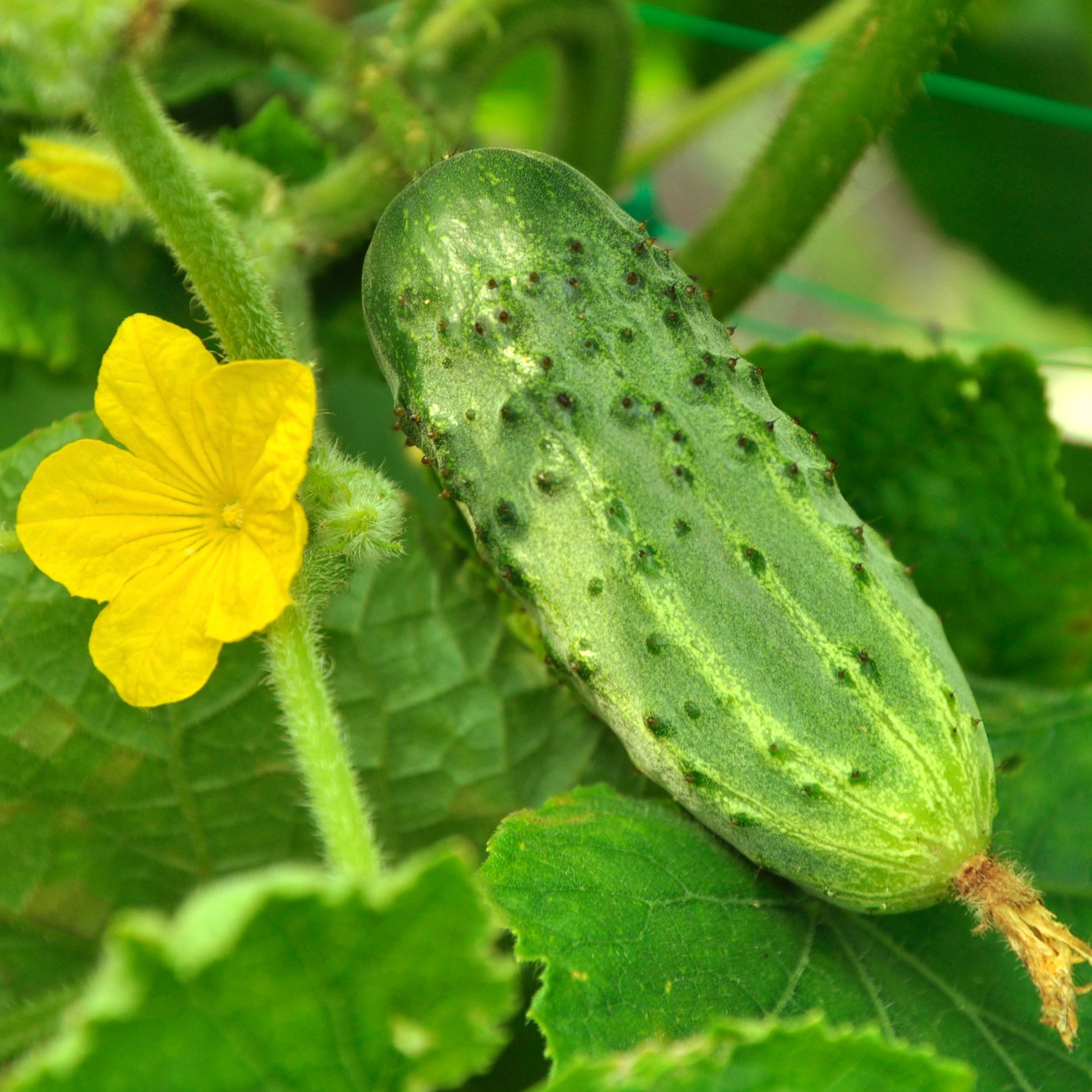 |
Increased germination rate; stimulated growth and development of crops; increased resistance to adverse environmental conditions and disease damage; increased early yield and overall yield; reduced nitrate content in cucumbers; improved product quality |
2 ml/kg (2 ml/L of water) |
Soak seeds before sowing for 3 hours. Application rate 1 L/kg |
1 |
After planting the seedlings, water the soil with a 1-2 ml/L water concentration of the solution (solution is applied to the soil near the roots, not on plants’ leaves) |
30 ml/ha (1 ml/10 L of water) |
Spraying crops: 1st spray in the 2-3 true leaves stage (BBCH 12-13), 2nd spray 15 days later (before sowing the seedlings into the ground). Application rate 300 L/ha |
2 |
Two sprays are the minimum treatment option. If intensive use of chemicals is the case (especially in glasshouse conditions), we recommend using Albit as an antidote (safener) every 1-2 weeks alongside the routine pesticide treatments (up to 10 per growing season) at a working solution rate of 1-2 ml/10 L (or 30-120 ml/ha). Albit can also be applied through drip irrigation: 2 ml/10 L of product is added to the irrigation system and supplied until the final rate of 1 L of Albit per ha is reached (three times in the first half of the growing season). Similarly, a solution of 1-2 ml/10 L can be used for regular irrigation instead of water (the solution should wet the plants' leaves) |
Peppers
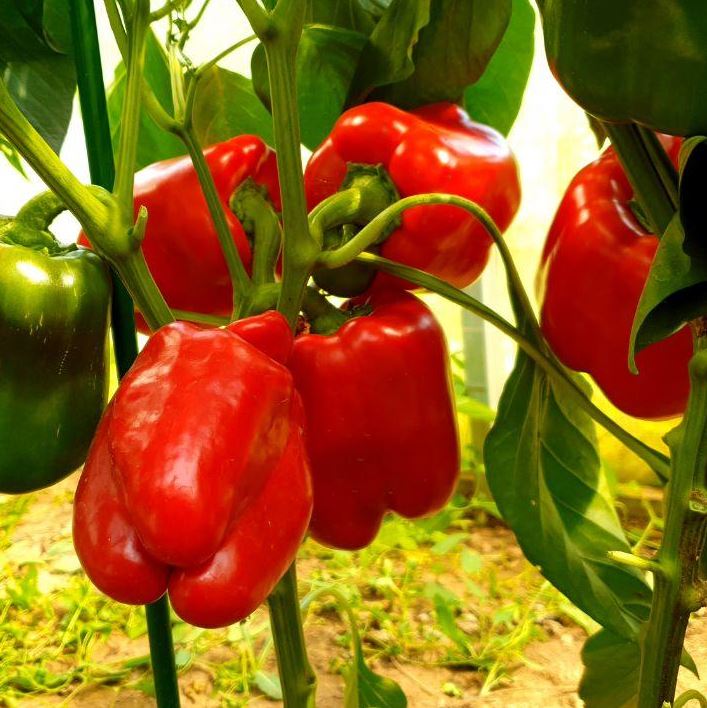 |
Increased germination rate; stimulated growth and development of crops; increased resistance to adverse environmental conditions and disease damage; increased early yield and overall yield; increased vitamin content and reduced nitrate content in fruits; improved product quality |
2 ml/kg (2 ml/L of water) |
Soak seeds before sowing for 3 hours. Application rate 1 L/kg |
1 |
After planting the seedlings, water the soil with a 1-2 ml/L water concentration of the solution (solution is applied to the soil near the roots, not on plants’ leaves) |
30 ml/ha (1 ml/10 L of water) |
Spraying crops: 1st spray in the 2-3 true leaves stage (BBCH 12-13), 2nd spray 15 days later. Application rate 300 L/ha |
2 |
Two sprays are the minimum treatment option. If intensive use of chemicals is the case (especially in glasshouse conditions), we recommend using Albit as an antidote (safener) every 1-2 weeks alongside the routine pesticide treatments (up to 10 per growing season) at a working solution rate of 1-2 ml/10 L. Albit can also be applied through drip irrigation: 2 ml/10 L of product is added to the irrigation system and supplied until the final rate of 1 liter of Albit per hectare is reached. Similarly, a solution of 1-2 ml/10 L can be used for regular irrigation instead of water (the solution should wet the plants' leaves) |
Onion
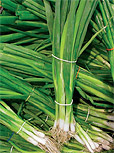 |
Increase of bulbs yield (open ground); green
biomass yield, leaf length, solids content (nutritive value of biomass)
(in greenhouse) chlorophyll and ascorbic acid content. Decrease of nitrate
content |
5 ml/kg (5 ml/L of water) |
Preplanting soaking of onions for 1 hour. Working solution
consumption is 1 L/kg |
1 |
In greenhouses Albit should be applied according
to recommendations for vegetables |
| 40 mL/hectare |
Spraying of onion in open ground with Albit in combination
with insecticides, fungicides and herbicides |
1 |
White and Chinese cabbage
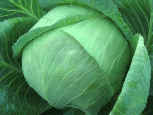 |
Increase of yield, germination
and germination power, quality of seedlings, average weight of cabbage
head, quality and marketability.
Control of damping-off and bacterial black rot |
1 ml/kg (1 ml/L of water) |
Presowing seed soaking in Albit solution (1 ml/L) for 3-10
hours. Working solution consumption 1 L/kg of seeds |
1 |
Highly effective to join of Albit application
with insecticides |
| 50 mL/hectare (1 ml/10 L of water) |
Foliar sprays at the BBCH stage 13-15 or 3-5 true leaves
(during transplantation and ingrowths of seedlings), at the BBCH stage
41-45 or (development of harvestable vegetative plant parts) and in 15
days after.
400-500 L/hectare |
2-3 |
Hop
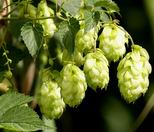 |
Increase of yield and quality of cones. Control
of diseases |
250 mL/hectare |
Spraying at a plants height of 2-2.5 m. 500 L/hectare |
3 |
It is recommended to apply Albit in composition
with scheduled treatments with insecticides |
| 500 mL/hectare |
Spraying at a plants height of 3-4 m. 1000 L/hectare |
| 750 mL/hectare |
Spraying at a plants height of 5.5-7 m. 1500 L/hectare |
Cotton
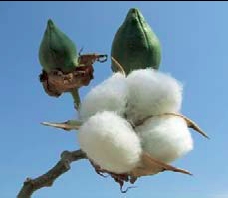 |
Increase of yield, germination, germination
power, acceleration of growth and development,
increase in the number of internodes, sympodial branches, accelerating
of growth and maturation of the bolls, percent of their disclosure. Increased
resistance to root rot, and cotyledon form of bacterial blight of cotton
(Xanthomonas
campestris pv. malvacearum) |
75 mL/t |
Presowing seed treatment, 10-15 L/t for smooth or 500-700
L/t for pubescent cotton seeds |
1 |
Is seeds treatment was not provided. It is possible to apply
Albit only for foliar spraying |
| 40-50 mL/ha |
Spraying at the stage of budding stage (BBCH 51-59). 300
L/ha or in accordance with pesticides application rules, with witch Albit
is used |
1-2 |
It is recommended to apply Albit together with scheduled
treatments with herbicides, insecticides, and fungicides in tank mixtures.
Albit acts as an antidote to the herbicidal stress |
Grapevine
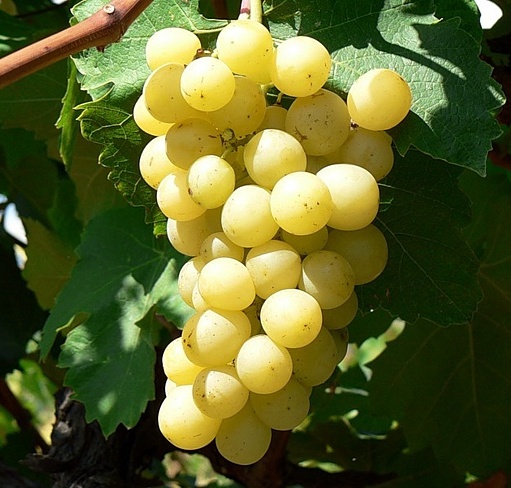 |
Increase of yield, number of ripened grapes,
annual increment of shoots, single shoot increment, ripe shoot increment,
weight and plumpness of a bunch.
Control of downy and powdery mildew |
200-250 mL/hectare (2-2,5 mL/10 L of water) |
Spraying before flowering (BBCH stage 60), after flowering
(BBCH stage 69), starting of fruits swelling (BBCH stage 71), touching
berries in bunches (BBCH stage 79), berries developing color (BBCH stage
83).
1000 L/ha |
3-5 |
Joint application in the mixtures with regular sprayings
with fungicides and insecticides |
Apple,
pear and the other horticultural trees.
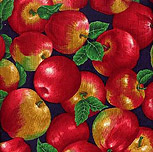 |
Increase of yield, annual increment of shoots,
photosynthetic activity of leaves, assimilation leaf surface, average
weight of fruits, resistance to adverse environmental factors.
Control of scab and Phyllosticta leaf
spot |
100 mL/hectare (or 1 ml/10 L of water, 0.5 mL/tree) |
Spraying at the stages of inflorescence emergence (51-54),
pink buds (BBCH stage 57), and fruit size up to 20 mm (BBCH stage 71-72).
Also apply Albit for immunization before visible signs of the disease.
Working solution consumption 1000 L/hectare or 2-5 L per tree |
2-5 |
Albit application in combination with minimal recommended
rates of chemical fungicides is the most effective for reduction of treatment
cost and for obtaining organic yield |
Cherry
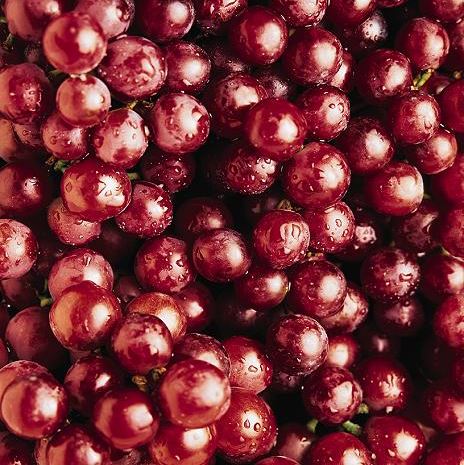 |
Activation of growth and developmental processes; increased resistance to adverse environmental conditions and disease; increased yields; improved product quality |
100 ml/ha |
Spray treatments: 1st – at the budding phase; 2nd and 3rd – with a 15 day interval. Application rate 1000 L/ha |
3 |
|
Plum
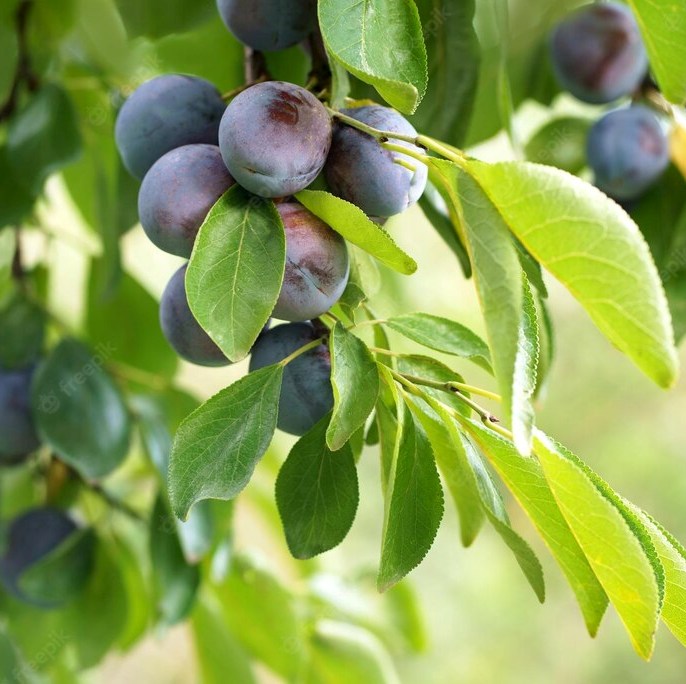 |
Activation of growth
and development, increased
tolerance to drought,
low temperatures and
other adverse
environmental conditions, stimulated
disease resistance, yield increase, product quality improvement
|
250 ml/ha |
Spray treatments: 1st before flowering; 2nd after
flowering; 3rd during the fruit
formation phase; 4th – two weeks before harvest. Application rate 1000 L/ha |
4 |
Application of Albit is recommended as an
antidote together with scheduled pesticide treatments to reduce
the phytotoxicity of pesticides |
Orange, tangerine
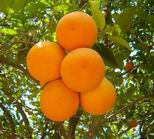 |
Increase of fruit yield, sprout growth,
resistance to anthracnose, resistance to adverse environmental factors
and excess use of pesticides |
250 mL/hectare (or 0,25 mL/L water) |
Joint application in tank mixes with regular sprayings with
insecticides and other pesticides, between BBCH stage 10 (beginning of
leaf development) and 75 (development of fruit), 2-3 times with an interval
of 2-3 weeks.
1000 L/ha |
2-3 |
|
Currant,
gooseberry, dog rose and the other berry-bushes
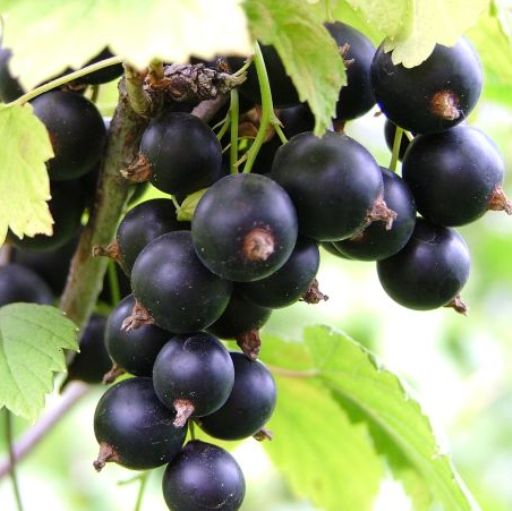 |
Increase of yield, acceleration of maturation, number of
flowers on one bush, setting of the berries, berry size, marketability,
vitamin C content, chlorophyll content in leaves, annual increment of shoots.
Improved physiological state of leaves. Increase of resistance to adverse
environmental factors (air and soil pollution, temperature jumps). Decrease
of rotten berries amount.
Faster and more concurrent fruit ripening, improved marketability, improved
physiological state of leaves, decrease of rotten berries amount.
Control of powdery mildew |
50 mL/hectare |
Foliar sprays beginning at the stage of breaking of buds
and budding (BBCH stage 51-59), then with interval of 25-30 days, 500-600
L/hectare |
2-3 |
For private plots of land (where calculations for hectare
is quite difficult) it is recommended to use for watering the Albit solution,
1 ml/10 L of water providing the solution gets onto the plant leaves |
Strawberry
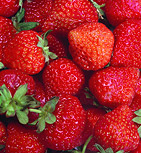 |
Increase of yield, average number of berries
from one plant, average weight of berry, leaf photosynthetic activity,
resistance to stress factors.
Control of and grey mould and marssonina leaf scorch |
40 mL/hectare (1 ml/10 L of water) |
Foliar sprays beginning with appearance of young leaves,
with an interval of 7-10 days. 400 L/ha |
3 |
Strawberry plantations might be watered with Albit solution,
1 ml/10 L, provided that the solution gets onto the plant leaves |
Bananas
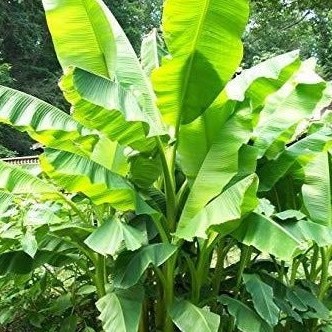 |
Increased number of leaves and their faster growth; increased number of new shoots; improved resistance to adverse environmental conditions and disease damage (Panama disease, black Sigatoka); restraining and retardation of disease development; acceleration of fruit ripening; increased yield |
2.5 ml/10 L of water |
Banana cuttings are soaked in Albit solution for 2 hours prior to planting. Use the same solution to water the cuttings after planting |
1-2 |
This type of treatment with Albit showed good results in greenhouses |
| 200-250 mL/ha |
Plants can be sprayed weekly to monthly in the first half of vegetative period. Application rate – 1000 L/ha |
3-10 |
Using Albit in a tank mix with fungicides was proven to be effective. A partial substitution of fungicides with Albit is also possible; it allows to decrease pesticide load and obtain environmentally friendly produce |
Olive trees
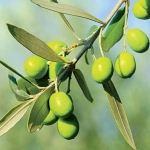
|
Activation of growth and development, formation of additional sprouts
and accelerated annual regrowth (especially young olive trees); increase
the number of flowers and seed-buds, increase of yield, improvement of
crop quality (olives with a standard size and quality, oil content);
increased resistance to drought, high temperature and disease infestation
(Cycloconium oleaginum, Spilocaea oleaginea etc.) |
2.5 mL/10 L of working solution (125-500 mL/ha) |
Foliar spraying: first – at the stages of budding/beginning of blossoming,
second – at the end of blossoming stage (10-14 days after first spraying),
third – at the stage of olive pit forming (15-20 days after second spraying),
forth – at the stage “forming of olive density (oiliness)” 2-3 weeks
later. Also, application may be used with standard recommended treatments
with insecticides and other pesticides with 2-3 week intervals. Terms,
application rate of working solution – according to the recommendations
for pesticides (500-2000 L/hà). |
3-4 treatments
for mature
(fruit-bearing) olive trees;
up to 8
treatments
for young
olive trees
(up to 3-4
years old
and have
not reached
the stage of economic
use)
|
It is more efficient to apply Albit as antidote in
tank mix with pesticides. Albit is recommended for
irrigated plantations and also in rain fed conditions.
Efficacy of Albit increases in more arid conditions.
After Albit treatment accelerated development of young
olive trees is observed: on third year (instead of forth-fifth
year) olive trees may be used for economic purposes. For
accelerating of development and annual growth, increased
amount of treatments per season of young olive trees is used |
Decorative
bushes (dog rose, lilac, jasmine, dogwood,
etc.), forest cultures
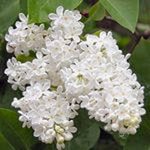 |
Increase of shoots regrowth, annual increment of shoots,
average chlorophyll content, leaf assimilation surface, number of flowers
per one bush, resistance to adverse environmental factors (air and soil
pollution, temperature jumps).Improvement of physiological state of leaves,
Earlier blossoming. Control of moulds, mildews, scabs and other diseases |
200 mL/hectare (or 2 ml/10 L of water, 1 ml/bush or tree) |
Foliar sprays begin at the stage of breaking of buds and
budding, (for ananthous plants – in the first half of vegetation), then
with interval of 15 days, 1000 L/hectare or 5 L/bush (tree) |
2-3 |
|
Cuttings of ornamentals, berry and forest shrubs
 |
Increase of rootage and establishment of
cuttings, initial growth of cuttings, chlorophyll content in leaves |
1 ml/L of water |
Soaking of cuttings in Albit solution for 3-5 hours before
planting. Consumption of processing solution 1 L/ 50-250 cuttings |
1 |
|
Flowers (roses,
gladiolus, pinks, cyclamens, Kafir lily, amaryllis, violet, primula,
etc.)
 |
Earlier blossoming. Increase of blossoming duration, improvement
of decorative appearance, increase of number of flowers per plant, increase
of extra and 1-st class flower production, more bright and saturated color
of flowers and leaves, control of diseases |
60-70 mL/hectare (1 ml/10 L of water) |
Foliar spraying with Albit solution conc. 1 mL/10 L at the
stage of budding and 2 weeks after. 600-1000 L/hectare |
1-2 |
Watering might be done with Albit solution, 2 ml/10 L, provided
that the solution gets onto the plant leaves |
Lawn
grass(fescue, bent, meadow grass, etc.)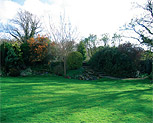 |
Increase of tillering and regrowth after
winter, growth processes, green biomass production, chlorophyll content,
turgor, shoot density, regrowth speed and grass height.
More even growth of different grass species. Decreased damping-off during
hibernation |
60 mL/hectare (1 ml/10 L of water) |
Foliar spaying at the 1-st part of vegetation (in the Spring),
and one week after, 600-1000 L/hectare |
1-2 |
Albit is recommended for stimulation of growth and tillering
in the critical periods (after winter, skewing, application of fertilizers,
at the time of drought). Spraying in the period of normal growth is undesirable,
because it can lead to surplus regrowth of grass |
